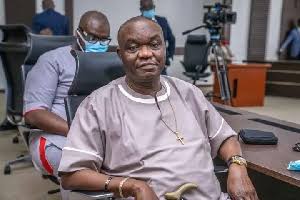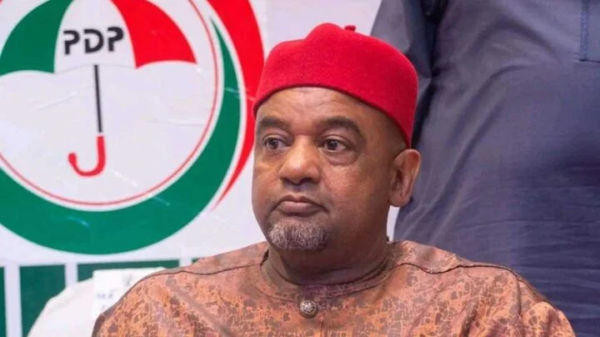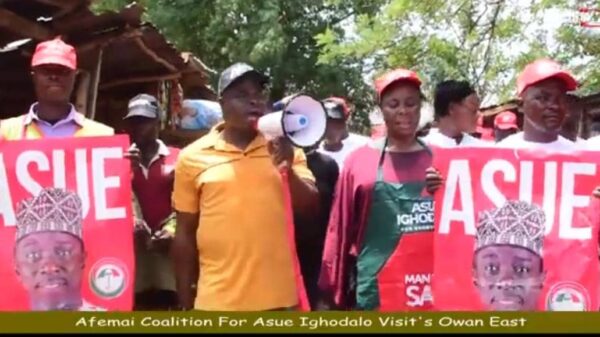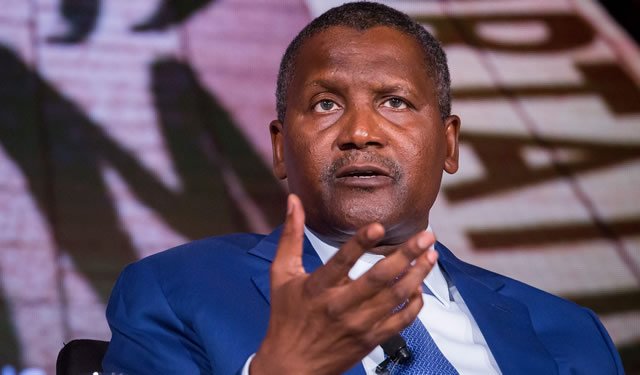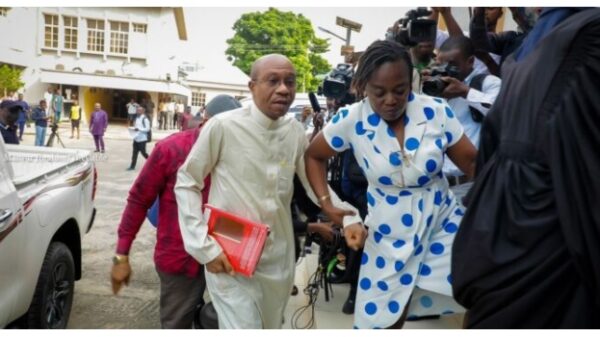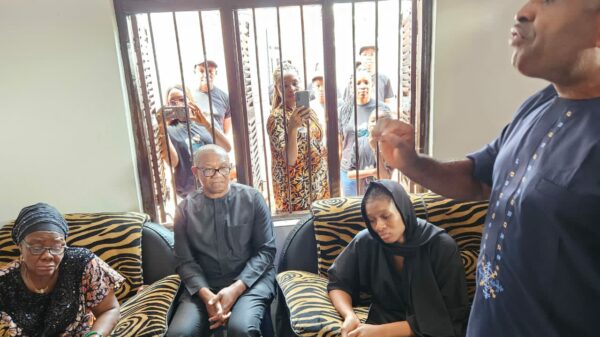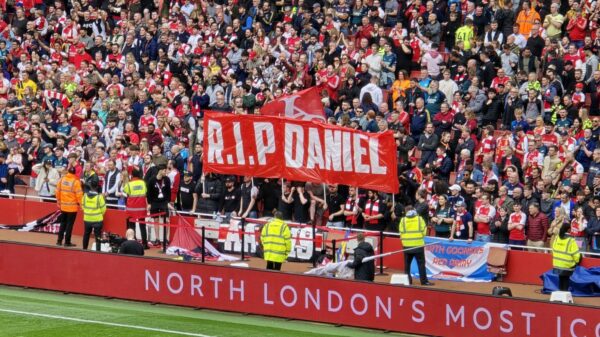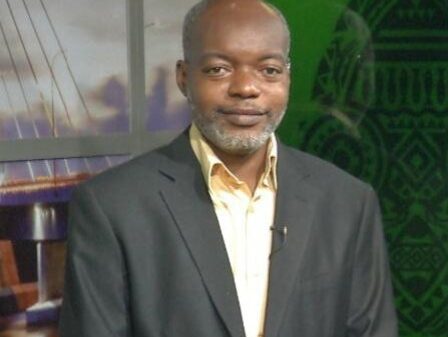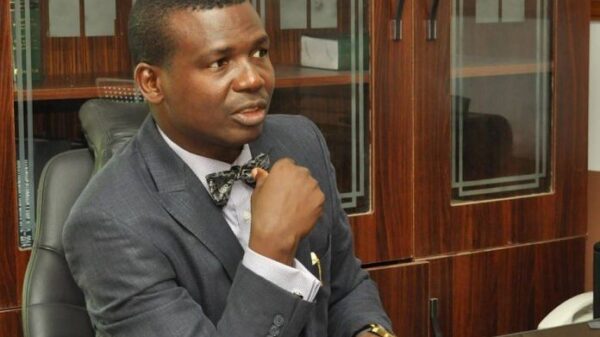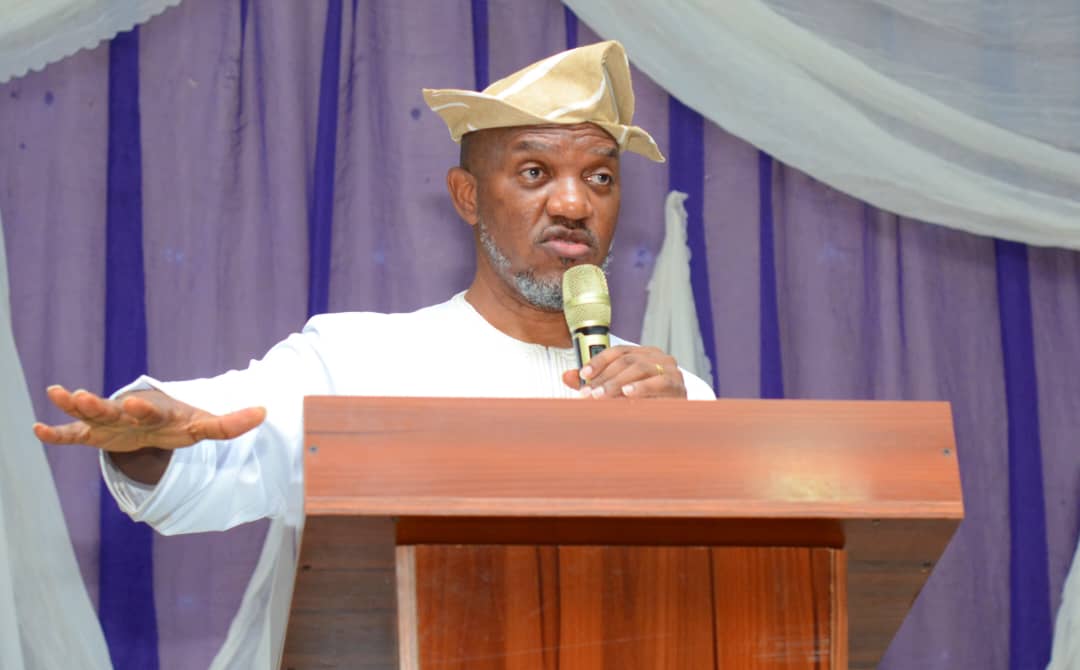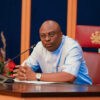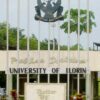A LECTURE DELIVERED BY ENGR. OLATUNJI ARIYOMO, FNSE, AS GUEST SPEAKER AT THE 2024 ALUMNI HOMECOMING OF THE DEPARTMENT OF CIVIL AND ENVIRONMENTAL ENGINEERING, SCHOOL OF ENGINEERING AND ENGINEERING TECHNOLOGY, FEDERAL UNIVERSITY OF TECHNOLOGY AKURE (FUTA) TAKING PLACE AT THE UNIVERSITY MULTIPURPOSE HALL AT OBANLA, FEDERAL UNIVERSITY OF TECHNOLOGY AKURE, ONDO STATE, NIGERIA ON THE 24TH OF APRIL 2024.
{Protocol…}
First, kindly permit me to show my immense appreciation to the leadership of the Department of Civil and Environmental Engineering of this great institution for organizing this homecoming event and for tapping me as a Guest Speaker. Allow me to equally extend my heartfelt gratitude to the Department, the School of Engineering and Engineering Technology,other Schools, and the past and present management of the university starting with the team led by Prof. Peter Adeniyi when he was Vice Chancellor and those led by his successors such as Prof. Bisi Balogun, late Prof. Biyi Daramola and the incumbent first female Vice Chancellor of this institution, Prof. Adenike Oladiji. These wonderful people have worked relentlessly to turn FUTA from just one of the many to the best university of technology in Nigeria steadily in the past 15 years and to an outstanding citadel of learning that now consistently ranks among the top 3 best universities nationwide in a global ranking. From the Federal University of Tension and Agony, our alma mater has morphed into the Federal University of Tenacity and Accolades. We are simply very proud of you.
When I was first approached about this lecture, the organizers wanted me to speak on the topic “Building Sustainable Future: Green Infrastructure and Economic Resilience in Civil Engineering”. I interrogated the topic and asked myself, won’t we build infrastructure first before we even go green? So I employed what we call the Speaker’s License to tweak the topic to – Nigeria’s Infrastructure, Growth, and the Chaos Model.The chaos part was deliberate – to get our attention. I must confess that I consider every occasion such as this as a very significant opportunity to trigger debates wherein our ultimate consensus can help reshape or lead to the re-evaluation of extant infrastructure ambitions and infrastructure delivery strategies and practices in Nigeria.
The Engineering Practice
I have been informed that this is going to be a multi-disciplinary gathering. It is therefore pertinent that I try to explain some of the core concepts and terms that would feature prominently in this lecture at least for the benefit of those who are not engineers. To begin with, the term engineering is derived from the Latin ingenium, meaning ‘cleverness’ and ingeniare, meaning ‘to contrive, devise’ (IAENG, 2016). Engineering is the professional practice in which a knowledge of the mathematical and natural sciences, gained by study, experience, and practice, is applied with judgment to develop ways to utilize, economically, the materials and forces of nature for the benefit of mankind (Freyberg, 2006). Engineering therefore has an identity (as a professional practice), a distinctive process (knowledge of mathematics and natural sciences), and an objective(to build economically for the benefit of mankind).
Engineering subjects or sub-disciplines are diverse and include civil engineering, mechanical engineering, electrical engineering, electronic engineering, metallurgical engineering, material engineering, agricultural engineering, petroleum engineering, computer engineering, financial engineering (IAENG, 2016), cost engineering, industrial engineering, biomedical engineering, systems engineering et cetera.
Flowing from the foregoing, the engineering profession is responsible for the building of infrastructure for the benefit of mankind. Put differently, it is safe to assert that infrastructure, particularly physical infrastructure,is the product of engineering. But what is infrastructure?
Infrastructure
The concept of infrastructure effectively covers physical, social, and or virtual assets depending on context. This is because infrastructure is “both relational and ecological … being the balance of action, tools, and the built environment” (Star, 1999). We no doubt have also seen the word infrastructure nebulouslystretched to include food or political hand-outs as instantiated by the notorious example of ‘stomach infrastructure” in Nigeria. Basically, infrastructure refers to “the services and facilities necessary for an economy to function” (Sullivan & Sheffrin, 2003). The World Bank considers infrastructure sectors to include “energy, information and communications; mining, transportation, urban development, water supply and sanitation” (World Bank, 2001). The American Heritage Dictionary of English Language (AHDEL) focuses its contemporary definition of infrastructure on the following:
On July 15, 1996, President Bill Clinton’s Executive Order 13010 defined infrastructure as “the framework of interdependent networks and systems comprising identifiable industries, institutions (including people and procedures), and distribution capabilities that provide a reliable flow of products and services essential to the defense and economic security of the United States, the smooth functioning of government at all levels, and society as a whole” (Moteff & Parfomak, October 1, 2004).
From the above, it is clear that infrastructure need not be physical alone. Of course, within the context of our discussion today, our focus is physical infrastructure. That said, the US presidential definition is nonethelessconsistent with what could be described as a definition from a national security point of view even as Section1016 (e) of the USA PATRIOT and Homeland Security Acts, in response to the September 11, 2001 terror attacks defined critical infrastructure as systems and assets – whether physical or virtual. In its explanatory notes on usage, AHDEL explains that the term “has been used since 1927 [this is supported by Oxford English Dictionary (2019)] to refer collectively to the roads, bridges, rail lines, and similar public works that are required for an industrial economy, or a portion of it, to function” and that “perhaps because of the word’s technical sound, people now use infrastructure to refer to any substructure or underlying system” including extended use to cover people e.g., “that terrorist organizations have an infrastructure of people sympathetic to their cause”. AHDEL added that it’s “Usage Panel finds this extended use referring to people to be problematic” (AHDEL, 2010).
Having examined the now limitless application or usage of the word infrastructure, within the context of our discussion, we shall be restricting ourselves to physical assets required for a society to function as our acceptable definition of infrastructure.
Notable Historical Public Infrastructure
One of the earliest public infrastructures built by man was the Appian Way or “Via Appia” which was built in 312BC in Rome during a war with the Semnites, a central Italy tribe, Compared to Romans, the Semnites were twice as populous and had a land area twice the size of medieval Rome (Hyde, 2017). Yet the Romans defeated them principally because Rome had the Appian Way. That road conferred two strategic advantages upon Rome by allowing troops and supplies to easily reach the battlefields.

Similarly, the first passenger-carrying public railway in the United Kingdom was opened by the Swansea and Mumbles Railway at Oystermouth in 1807, using horse-drawn carriages on an existing tramline (please see Figure 2). Advancement in steam technology later led to the commencement of the first locomotive-hauled public railway in the world over a 40km long route on 27 September 1825 in the UK. In 1869, Queen Victoria commissioned two railway coaches, which were built at Wolverton Works by the London and North Western Railway and designed by Richard Bore. The railway would later confer four strategic advantages upon the United Kingdom. It became a central solution to the nation’s transportation challenges sometimes representing more than 20% of all passenger journeys in Europe (NR Press Release, 2010). It evolved into a major employer of labour. The rail industry back thenemployed 115,000 people and supported another 250,000 through its supply chain (Oxford Economics, 2018). It emerged as a key source of revenue to the United Kingdom and construction technical know–how became a significant source of foreign exchange earnings for the United Kingdom. The British Government commenced the building of its first rail line in China in 1865 and started one in Nigeria (Lagos-Abeokuta-Ibadan) in March 1896. The first rail line in Nigeria took them just 2 years to complete. By 1905, China had started building its railways by itself. As of 2024, Nigeria relies heavily on China for the construction of its rail infrastructure.
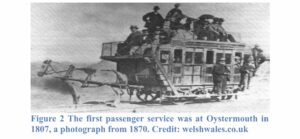
Diane K. Drummond (University of Leeds) examined British investments in overseas railways systems and found that British capital investment in railwaysglobally by 1914 was 40.68% of Britain’s total capital investment overseas which equaled £3,763.3 million that year. The annual Interest paid on British Investment in Railways overseas from 1905 to 1906 (see table) was 83 million British Pounds (Paish, 1909).
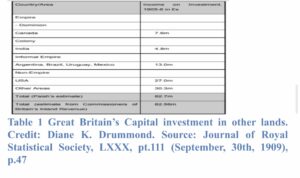
Comparatively, the discovery of oil in Dubai in 1966 triggered the development of the present Dubai. Regardless of the economic implication of the oil booms, Dubai’s ruler at the time, Sheikh Rashid bin Saeed Al Maktoum (1958 – 1990) commenced aggressive investment in functional infrastructure in the realization that oil as a resource was finite and that one day Dubai would run out of oil (Dubai Online, 2019).As a result, he began to build an economy that would outlast oil. In doing this, what was his focus? Functional infrastructure. By 2018, according to Dubai’s Department of Tourism and Commerce Marketing, a total of $30.82 billion was spent in 2018 by overnight international visitors in Dubai, a 3.8% increase over 2017 ($29.70 billion). This makes Dubai the city that brings in the most tourist dollars worldwide, with Mecca coming second at $20.09 billion (compare nurture versus nature aphorism). On average, a visitor spends $553 per day in Dubai (DDT, 2019). Yet, Dubai attracted more tourists than ever before in 2023 than at any other time in its history. It welcomed 17.15 million international overnight visitors that year based on data published by Dubai’s Department of Economy and Tourism (DET)(Mediaoffice.ae, 2024).
It is important to quickly state that oil was discovered in Nigeria in commercial quantity in 1956 by Shell-BP, ten years ahead of Dubai. As it is with the rest of the UAE, about 95% of Dubai as a federating unit’s Gross Domestic Product is not oil-based. As of 2018, Crude oil accounted for less than one percent of Dubai’s GDP(Edmond, 2019) whilst tourism accounts for as much as 20% (Dubai.com, 2018). “The relentless commitment to infrastructure development turned Dubai into the Mideast hub for finance, information technology, real estate, shipping, and even flowers” (Winkler, 2018). The guiding philosophy behind infrastructure development in Dubai is thus the deliberate application or use of a moderate amount of crude oil reserves to generate the infrastructure for education, healthcare, manufacturing, trade, and tourism, in order to build a world-class economy that can attract commerce, tourists and folks seeking better life!
A common factor
From medieval Rome to Victorian-era Britain to modern Dubai, there is a common theme to each of the spectacular development successes that have been highlighted – a deliberate effort to grow specific infrastructure so as to gain a specific development advantage. Iconic legacy infrastructure projects and adequate physical assets were developed for education, healthcare, transportation, manufacturing, trade, and tourism, in order to build each of those economies into a global destination of choice. Once effective, those countries’ infrastructures, in turn, became critical assets that were central to service delivery, employmentgeneration, revenue generation, and in many instances as ‘exports’ yielding foreign exchange earnings through sales of expertise (as Britain did in the 1800s and as China is currently doing in many African countries) or ‘tourist dollars’.
It is correct to assert that for the listed development role models; deliberately growing stock of infrastructure is a mandatory prerequisite to economic competitiveness or sustained and sustainable development.
Chaotic Development
Most of us here might have asked in the past or probably be asking right now “Why can’t Nigeria be like the United Kingdom”? Or “Why can’t we be like the UAE, like Dubai”? Why is it that though Britain built the first railways in both China and Nigeria, why is Nigeria wholly dependent upon China for its critical railway assets over a hundred years afterward?
The answer stares us in the face although we may refuse to acknowledge it. Nigeria is the eponymous ‘egbinrin ote’ – complex plots of schism and divisiveness. Our country presents a unique case in convoluted conflict of identities that make cooperation towards a united altruistic goal difficult although not impossible. I have studied countries that transited from crisis to stunning success such as Japan, after Hiroshima and Nagasaki, and Germany after the ruins of World War II, or those that were crawling fledgling nations some 40 years ago such as Singapore, Malaysia, United Arab Emirates et cetera, They all have experienced linear growth based on their elite consensus to develop and a focus on infrastructure development as a primary or fundamental strategy towards economic competitiveness. None of them however harboured or accentuated their fatal differences as a definitive policy of state as Nigeria has done.
In a conflicted scenario such as this, a good way to understand the stifling underdevelopment of Nigeria is through the concept of chaos in science and engineering. Whilst this may appear foreboding, it nonetheless offers hope.
As part of the learning process, the average pupil engineer while in training must come across the concept of entropy. This is a thermodynamic quantity representing the unavailability of a system’s thermal energy for conversion into mechanical work. Entropy is often interpreted as the degree of disorderliness or randomness in or of a given system. Chaos theory on the other hand simply states that a system where no randomness is involved in generating future states in the system can still be unpredictable. Essentially, the basic tenet of chaos theory that relates to entropy is the idea that the system inclines or leans towards ‘disorder’(Truong-Son, 2016), that is, unpredictable. Overall, chaos theory deals with things that are impossible or very difficult to control and predict. Now our colleagues in computer engineering or science are familiar with the ‘chaos model’.
In computing, the chaos model is a structure of software development. It was noted that project management models whilst sufficient at managing schedules and staff, do not provide methods to address ancillary issues like computer bugs or other technical concerns. At the same time, programming methodologies, while effective at fixing bugs and solving technical problems, do not help in managing deadlines or responding to customer requests. Sometimes I see some nexus between the dilemma presented by this situation and Heisenberg’s Uncertainty Principle in quantum mechanics in relation to the precise simultaneous measurement of the position and velocity of an object. The objective of the chaos model is therefore to attempt to generate structures that will bridge this gap (ACM SIGSOFT, 1995). In effect, the chaos model’s relationship to chaos theory is the idea that big issues cannot be stabilized or fixedwithout also stabilizing or fixing the smaller issues.
Gentlemen and ladies, can you see where I am going?
There are very important small issues that have simply made forging an elite consensus around the growth and development of Nigeria difficult. They are also the root cause of the nation’s economic uncertainties in the past 6 decades. Issues of ethnicities, religion, and socio-political conflicts continue to undermine the potential of Nigeria for greatness. The stipulation from the Chaos Model, within the context of this lecture, is that we must address those fundamental and foundational issues in their relatively small or seemingly insignificant form for us to fix the wider or broader issues with Nigeria and thereafter become globally competitive. The seemingly smaller issues are fatal distractions easily leveraged by unpatriotic and unscrupulous elements as cover to perpetrate and perpetuate their selfish agenda in the guise of fronting for the collective.
Furthermore, remember that I earlier implied that whilst the entire scenario of the Nigerian Underdevelopment Dilemma presented as a candidate for some form of chaos modeling and therefore foreboding, it nonetheless offered hope. This is because I have come to the conclusion that chaos is in fact natural. Order, on the other hand, though desirable, is unnatural – and has to be earned.
Overall, in modeling Nigeria’s development dilemma, the biggest albatrosses to her focus are the underlying small problems of tribe, religion, and system or method of governance. What the chaos model suggests in the Nigeria scenario is that these issues must be stabilized, fixed, or addressed for the bigger issue of development to take place. The holy book pointedly asked – “can two walk together unless they agree?”(Amos 3:3).
Our Potential
Nigeria is the hypocenter of Sub-Saharan Africa’s economy. With a population of over 228 million(UNPD, 2024), Nigeria’s GDP was 472.62 billion US Dollars in 2022 and has averaged 125 billion US Dollars from 1960 until 2018 (Trading Economics, 2024). Nigeria has one of the largest crude oil and natural gas reserves in Africa with significant deposits of other largely untapped minerals. The nation has an 853 km long coastline, 344,000 square km of arable land, and a strong age mix that supports innovation and entrepreneurship.
In spite of her great potential, Nigeria as a collective has failed to efficiently apply moderate resources to build a critical stock of infrastructure or generate the infrastructure for education, healthcare, manufacturing, trade, and tourism, in order to build up Nigeria or Nigeria’s economy. There is a common theme being violated by Nigeria – the disregard for a deliberategrowth of infrastructure stock as a mandatory prerequisite to sustained and sustainable development. These common themes permeated the development examples I earlier listed in the course of this lecture. To the contrary, Nigeria appears to have forged an entrenched habit of recklessly applying her resources to service frivolous, bogus, and often superficial needs that constitute no asset either in the immediate or in the future. The paradox is astonishing when annual budget rituals reveal humongous expenditures on inanities as priority expenditures from limited resources while the nation goes cap in hand to beg for loans purportedly to service critical infrastructure. From her independence in 1960 till date, Nigeria has, at least, experienced 3 major oil boomswhich proceeds should have triggered the type of deliberate and structured development required to put order in her chaos.
Healthcare facilities in many parts of Nigeria remain a nightmare. Transportation and traffic experiencesremain frightening. Spatial planning is often absent with market vendors taking over sidewalks of limited roads to ply their wares. Many pupils learn on bare floors in several public schools. Our public facilities are often an eyesore – with the saddest examples being our international airports where the convenience and toilet facilities would often make you shake your head in disgust and wonder what is going on in the minds of our visitors! The walls and floors are often unattended for years. Facility maintenance does not simply exist in our thought ecosystem.
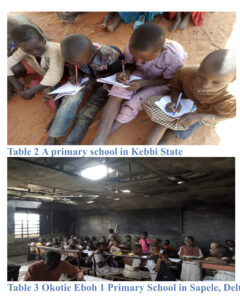
Hope
Remember that our definition of engineering concluded with the words “…for the benefit of mankind”. Remember too that we have established that infrastructure is essentially a product of engineering.Recall also that we have confirmed that Nigeria has found it difficult to convert her unique natural advantages and human resource endowments into economic and social benefits for the country and the majority of her citizens and that this has fatally denied her the evolution of such assets that can drive a competitive economy.
Order is the antithesis of chaos. Addressing public infrastructure deficits is a methodical way of creating or simulating order or restoring order. Fixing infrastructure is in fact the quickest way for Nigeria to attain social equity. This is because the average public infrastructure represents the common platform of goods and services capable of equitably addressing the communal needs of the people regardless of status.
You may have observed that I have not dwelled upon the need to craft development plans or visions. Do not get me wrong. Visions are necessary for the generation of such plans that can make infrastructure development a success. But visions are useless to a man perpetually in slumber. We crafted Vision 2020 several years ago. Before that, there was Vision 2000. At the time we unveiled Vision 2020, it seemed so far away. Then we crossed our legs, tilted our caps over our faces, foldedour hands, and went to sleep. Similarly, the year 2020 came in indeed – and quietly passed. The words of John C. Maxwell hold true a “Vision doesn’t come alive until the leader models it”.
As earlier stated however, the biggest albatross to Nigeria’s ability to mirror the successes of the likes of the UK, Dubai et cetera are the underlying unattended small problems of tribe, religion, and system or method of governance that best serve the people. From the chaos model, it will be nearly impossible to fix the bigger challenges of infrastructural development and economic prosperity without stabilizing these other small issues. What the chaos model suggests in the Nigeria scenario is that these issues must be stabilized,fixed, or addressed for the bigger issue of development to take place.
Recommendations and Conclusion
Structurally fix the seemingly smaller issues and remove the oil that is firing discord and the growing activities of non-state actors across the geo-political zones to enable the formation of elite consensus across ethnic, religious, and socio-political divides. Evolve a model of leadership that creates room for the brightest and most capable among the people to rise into strategic leadership positions. In the UK for instance, from kindergarten to the university, there are systems in place that identify talents and create room for their being nurtured, covertly. This is why within a single classroom in the average British school, there are actually about six disparate classes. Only parents who pay attention would know.
Concurrently, develop a master plan for all cities, towns, and villages in Nigeria and let everywhere in the country become a giant construction site for the provision of the needed infrastructure for education, health, food security, physical security, transportation, communication et cetera. We must however not build just for building sake. No. Rather, we must build to be competitive. We must build with the additional intent of having such assets rank among the best globally in terms of quality, durability, efficiency, safety, aesthetics, and cost–effectiveness. Each asset, whether national or local must then be supported with a maintenance plan. We can even decide to empower organizations like the EFCC and its equivalent at the state or local councils to go after not only thieves who stole money but officials who allow national and local assets to go to waste from lack of maintenance thereby causing losses as adjunct penalties with even greater negative impact than what is directly being stolen.
What do we need to get all these done? We need the political will from leaders who appreciate the vision and are enamored of the future of our people. We need the technical know-how that must be deliberately acquired as part of strategic national and local development plans. We need a lot of money to be created by capable minds who know how to get that done.
Ladies and gentlemen, the only limit to our development is our imagination. This is because development will evolve only in the direction of our imagination. Thus, beyond mere wishful thinking and rhetoric of good plans or intentions, Nigeria must in practical terms begin the serious job of economic delivery of 21st–century infrastructure across all sectors. This must be the sole focus of our budgets. This must be deliberate. This must be compulsory. THANK YOU.
References
ACM SIGSOFT. (1995, January). The chaos model and the chaos cycle. ACM Digital Library, 20 (1).
DDT. (2019). Dubai Department of Tourism. Retrieved September 27, 2019, from https://www.visitdubai.com/en/department-of-tourism/about-dtcm/tourism-vision
Dubai Online. (2019). Essential Tourist Information. Retrieved from https://www.dubai-online.com/essential/
Dubai.com. (2018). Dubai Economy. Retrieved April 24, 2024, from Dubai: https://www.dubai.com/v/economy/
Edmond, C. (2019, November 1). From fishing village to futuristic metropolis: Dubai’s remarkable transformation. Retrieved April 24, 2024, from Weforum: https://www.weforum.org/agenda/2019/11/dubai-uae-transformation/
Freyberg, D. L. (2006). Stanford University School of Engineering. Retrieved November 26, 2019, from THE NATURE OF ENGINEERING: https://web.stanford.edu/class/engr1n/Day_1_Intro1.pdf
Hyde. (2017). Via Appia and Roman Roads. Retrieved 2019, from Mrs Hyde’s Build Rome in a Day: https://sites.google.com/a/greececsd.org/romehyde/via-appia-and-roman-roads
IAENG. (2016). International Association of Engineers. Retrieved November 17, 2019, from iaeng.org: http://www.iaeng.org/about_IAENG.html
Mediaoffice.ae. (2024, February 7). Dubai achieves its best ever annual tourism performance with international tourists. Retrieved April 24, 2024, from Media Office of the Government of Dubai: https://mediaoffice.ae/en/news/2024/February/07-02/Dubai-achieves-its-best-ever-annual-tourism
NR Press Release. (2010). Nine out of ten trains arrive on time during January. London: Network Rail (NR).
Oxford Economics. (2018). The Economic Contribution of UK Rail 2018. London: Oxford Economics.
Paish, G. (1909, Septeber 30). Great Britain’s Capital investment in other lands. Journal of Royal Statistical Society, LXXX(pt.111), 47.
Trading Economics. (2024). Nigeria’s GDP. Retrieved April 24, 2024, from Trading Economics: https://tradingeconomics.com/nigeria/gdp?poll=2019-12-31
Trading Economics. (2024). Nigeria’s GDP. Retrieved April 24, 2024, from Trading Economics: https://tradingeconomics.com/nigeria/gdp?poll=2019-12-31
Truong-Son, N. (2016, March 2). How does entropy relate to chaos theory? Retrieved 2019, from Socratic: https://socratic.org/questions/how-does-entropy-relate-to-chaos-theory
UNPD. (2024). Nigeria Population (LIVE). Retrieved from Worldometers.info: https://www.worldometers.info/world-population/nigeria-population/
Winkler, M. A. (2018, January 17). Dubai’s the very model of a modern mideast economy. Retrieved April 24, 2024, from Bloomberg: https://www.bloomberg.com/professional/insights/markets/dubais-model-modern-mideast-economy/#:~:text=The%20relentless%20commitment%20to%20infrastructure,1%20percent%20to%20GDP%20today.






